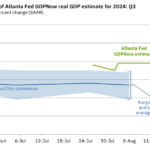Bitcoin’s recent price volatility has many wondering whether large Bitcoin holders are taking advantage of the price drop to accumulate more Bitcoin. While some indicators may initially suggest an increase in long-term holdings, a more nuanced story emerges, especially after the current extended period of volatile consolidation.
Are long-term holders buying more?
Initial observations suggest that long-term Bitcoin holders are increasing their holdings. Supply for long-term holdersSince July 30, the amount of BTC held by long-term holders has increased from 14.86 million to 15.36 million. This jump of roughly 500,000 BTC has led some to believe that long-term holders are aggressively buying into the dip and could be setting the stage for the next big price rally.
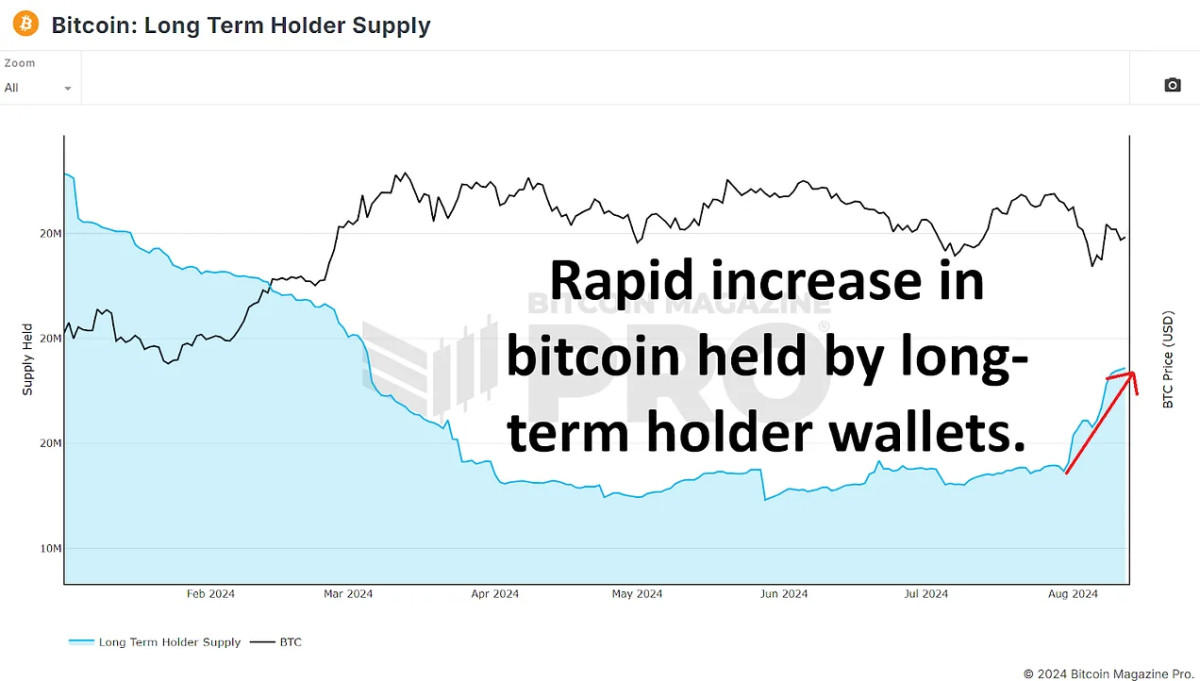
However, this interpretation can be misleading. Long-term holders are defined as wallets that have held BTC for more than 155 days. This week we just passed 155 days from the most recent all-time high. Therefore, many short-term holders over that period may have simply moved into the long-term category without any new accumulation occurring. These investors are now holding BTC in hopes of a price increase. Therefore, this chart, on its own, does not necessarily indicate new buying activity by existing market participants.
Coindays Destroyed: Contradictory Indicators
To examine the behavior of long-term holders in more detail, Supply Adjusted Coin Days Destroyed Metrics for the last 155 days. This metric measures how quickly coins are moving, with an emphasis on coins that have been held for a long time. A spike in this metric could indicate that long-term holders with significant amounts of Bitcoin are moving their coins, perhaps indicating more selling than accumulating.
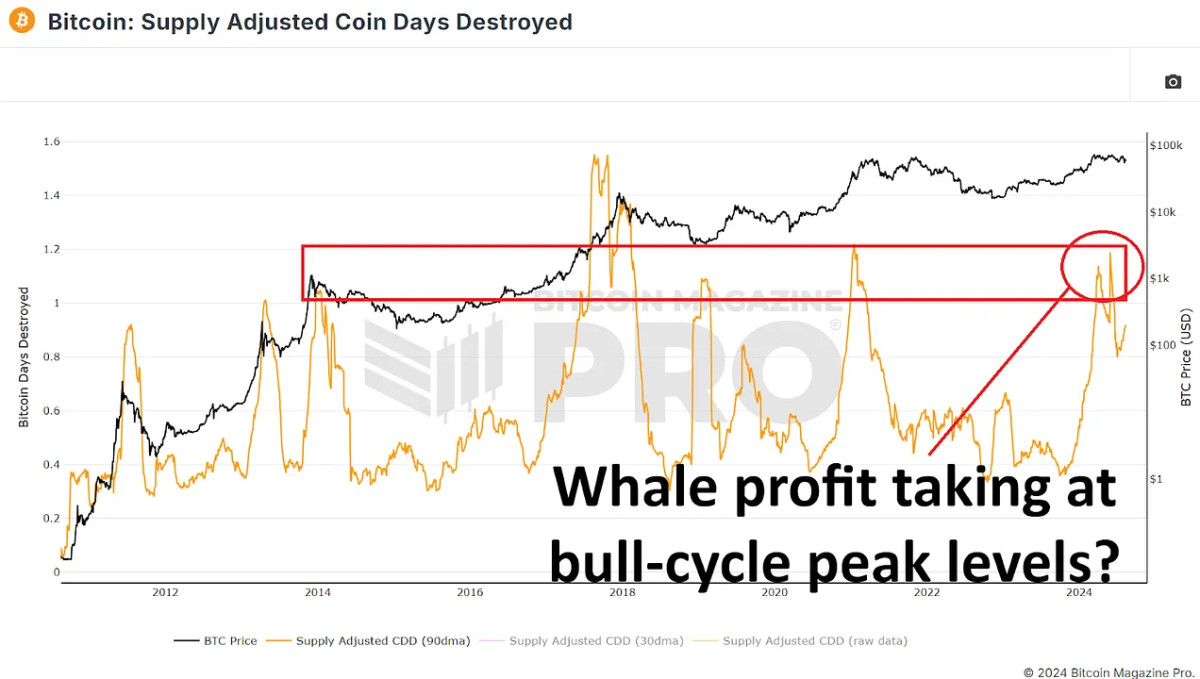
We have seen a significant increase in this data recently, suggesting that long-term holders may be distributing their BTC rather than accumulating it, however this spike is primarily skewed by a single large transaction of around 140,000 BTC from a known Mt. Gox wallet on May 28, 2024. If we remove this outlier, the data is much more typical for this stage of the market cycle, comparable to the periods of late 2016 to early 2017, or mid-2019 to early 2020.
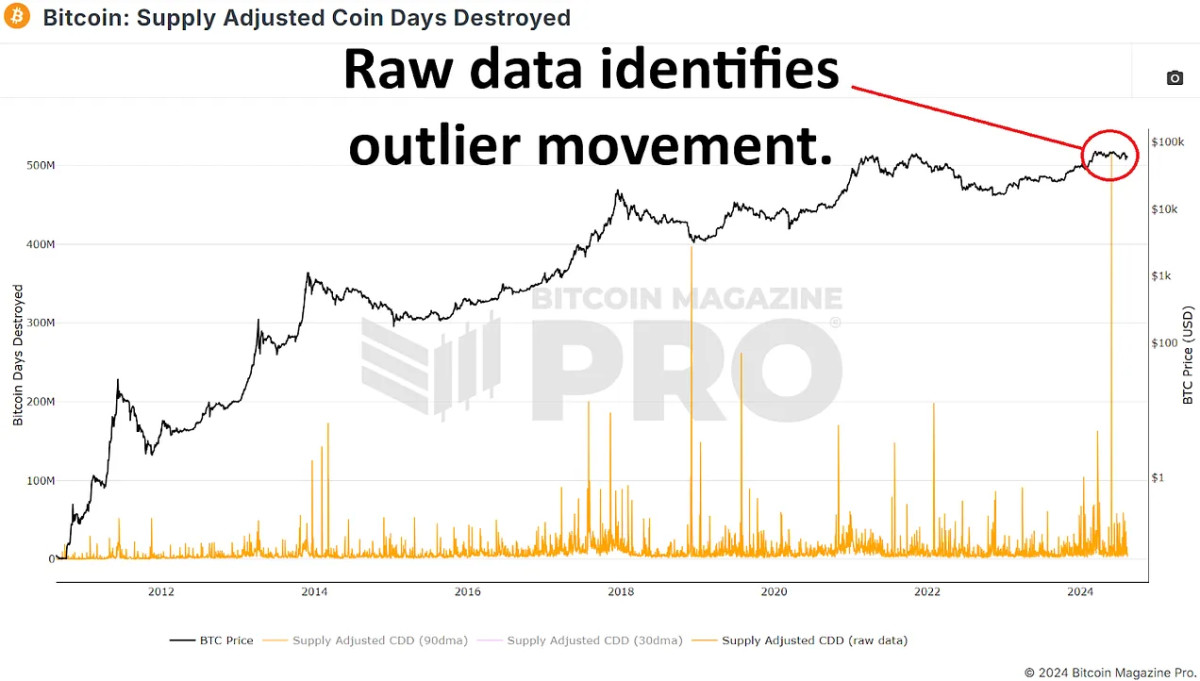
Whale Wallet Actions
To determine whether whales are buying or selling Bitcoin, it is important to analyze wallets that hold significant amounts of coins.At current prices, at least $600,000) allows you to assess the behavior of key market participants.
Since Bitcoin peaked earlier this year, A wallet holding at least 10 BTC There was a slight increase. Wallets holding 100 BTC or more Bitcoin has also been showing a gradual upswing. Given the minimum thresholds included in these charts, the amount of Bitcoin accumulated in wallets holding 10-999 BTC could equate to tens of thousands of coins purchased since the most recent all-time high.
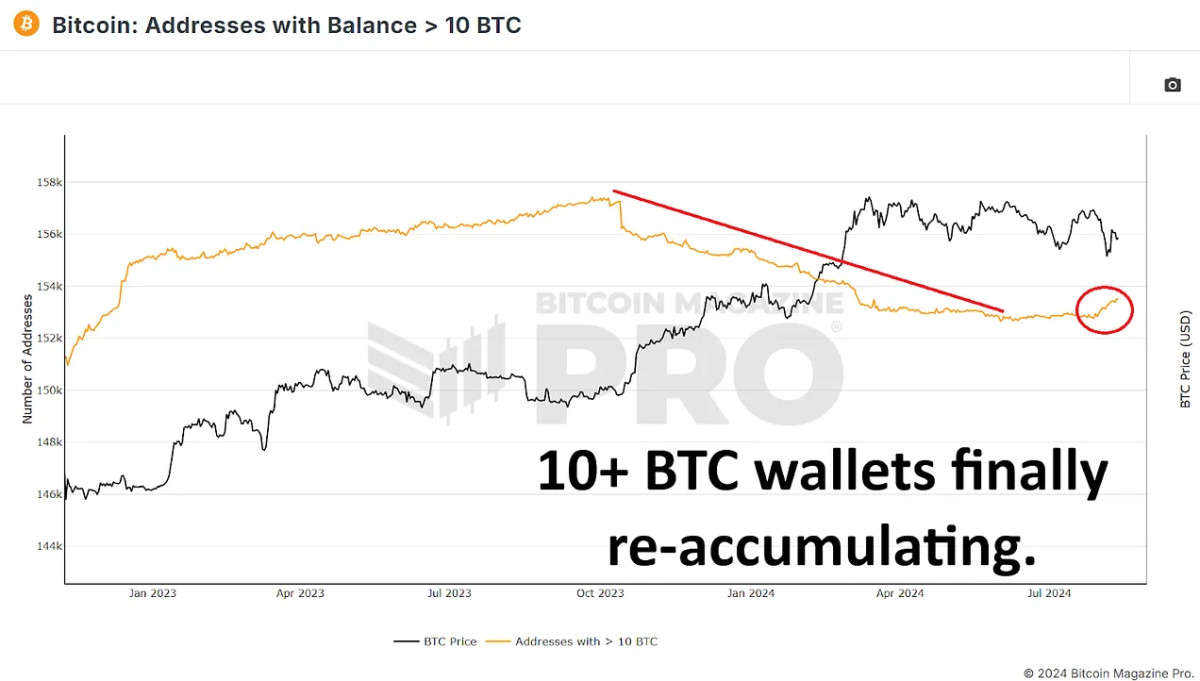
But on a bigger picture, this trend is reversed. Wallets holding 1,000 BTC or moreThe number of these larger wallets has decreased slightly, suggesting that some large holders may be distributing their BTC. The most notable change is Wallets holding 10,000 BTC or moreIt has fallen from 109 to 104 in the past few months, suggesting that some of the largest Bitcoin holders may be taking profits or redistributing their holdings to smaller wallets. However, most of these very large wallets are typically exchanges and other centralized wallets, so they are more likely to be collections of coins from traders or investors rather than individuals or groups.
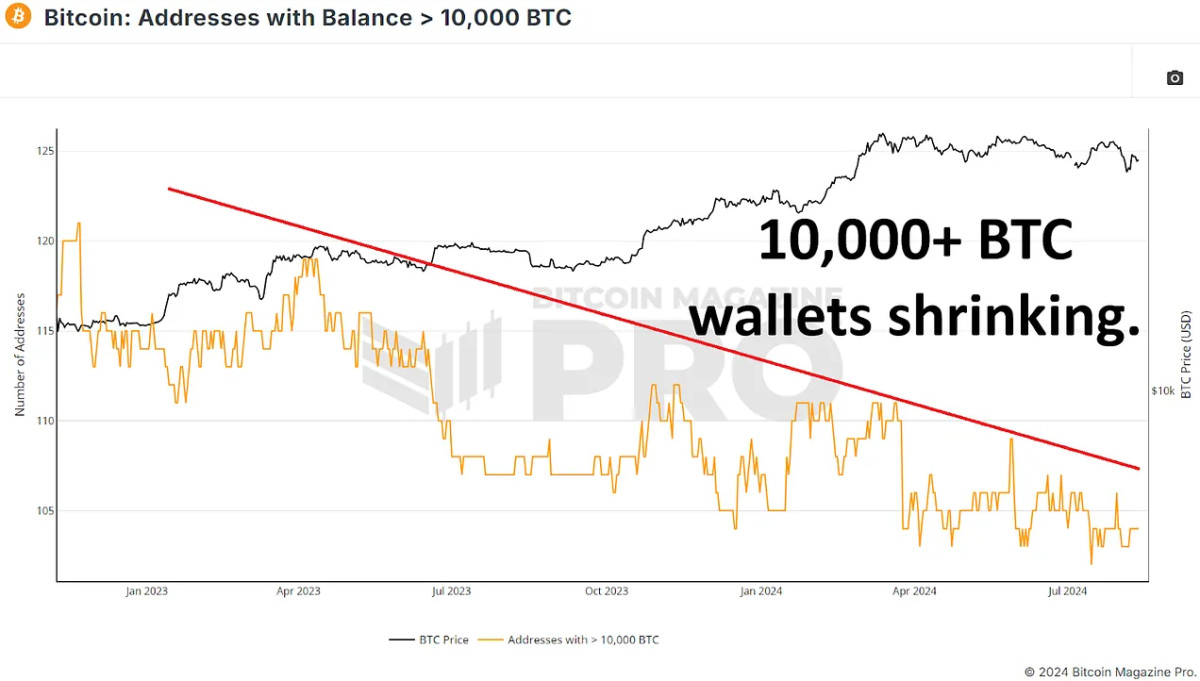
The role of ETFs and inflows of funds from institutional investors
Since its assets under management (AUM) peaked at $60.8 billion on March 14, the BTC ETF’s AUM has fallen by about $6 billion, but considering Bitcoin’s price decline from its all-time high, this equates to an increase of about 85,000 BTC. While this is positive, this increase only offset the amount of newly mined Bitcoin in the same period, also 85,000 BTC. The ETF has helped to alleviate selling pressure from miners and possibly large holders, but has not accumulated enough to have a positive impact on the price.
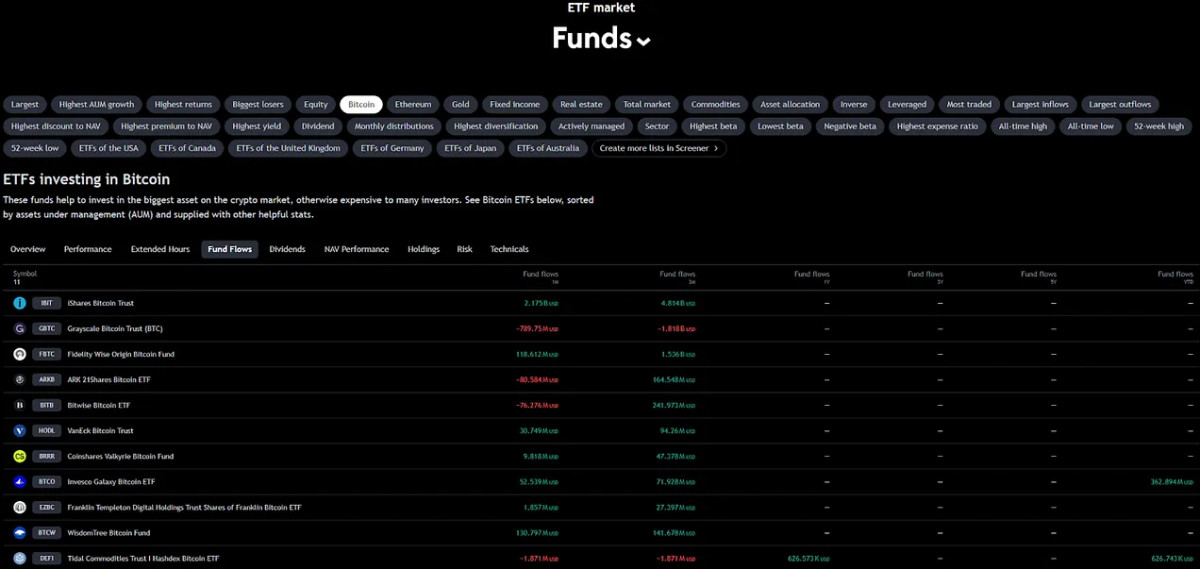
Growing interest from retailers
Interestingly, while larger holders appear to be selling their BTC, there has been a significant increase in smaller wallets. Hold between 0.01 and 10 BTC. These smaller wallets have added tens of thousands of BTC, indicating growing retail investor interest. The net movement from wallets with 10+ BTC to wallets with less than 10 BTC is about 60,000 Bitcoin. While this may seem alarming, given that throughout bull cycles, millions of Bitcoin typically transfer from large, long-term holders to new market participants, this is not a cause for concern at this time.
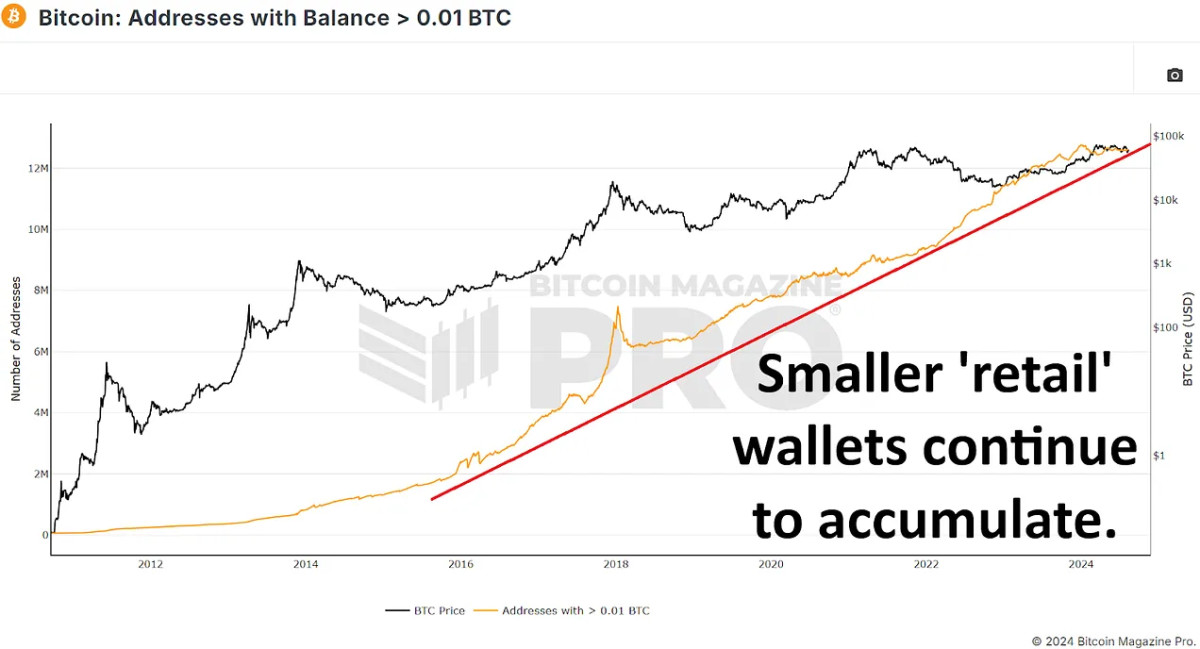
Conclusion
The story that whales have been accumulating Bitcoin during Bitcoin dips and volatility appears not to be true: while the long-term holder supply indicators look initially bullish, it mainly reflects the migration of short-term holders into the long-term holder category, not new accumulation.
The impact of increasing retail holdings and stabilizing ETFs could provide a strong foundation for future price appreciation, especially if institutional interest is rekindled after the halving and retail inflows continue, but for now they have done little to drive Bitcoin’s price higher.
The real question is whether the current distribution phase will set the stage for a new round of accumulation that could propel Bitcoin to new highs in the coming months, or whether the flow of older coins to new entrants will continue, limiting any potential upside for the remainder of the bull cycle.
🎥 If you’d like to learn more about this topic, check out this recent YouTube video: Are Bitcoin Whales Still Buying?
Also, be sure to check out our latest YouTube video where we discuss how we can improve one of Bitcoin’s best metrics.


